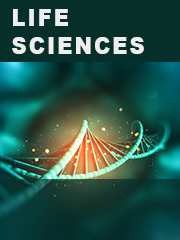Report overview
Food allergy is an immune system reaction that occurs soon after eating a certain food. Even a tiny amount of the allergy-causing food can trigger signs and symptoms such as digestive problems, hives or swollen airways. In some people, a food allergy can cause severe symptoms or even a life-threatening reaction known as anaphylaxis.
This report aims to provide a comprehensive presentation of the global market for Food Allergy and Intolerance Products, with both quantitative and qualitative analysis, to help readers develop business/growth strategies, assess the market competitive situation, analyze their position in the current marketplace, and make informed business decisions regarding Food Allergy and Intolerance Products. This report contains market size and forecasts of Food Allergy and Intolerance Products in global, including the following market information:
Global Food Allergy and Intolerance Products Market Revenue, 2018-2023, 2024-2029, ($ millions)
Global Food Allergy and Intolerance Products Market Sales, 2018-2023, 2024-2029, (K Units)
Global top five Food Allergy and Intolerance Products companies in 2022 (%)
The global Food Allergy and Intolerance Products market was valued at US$ 24380 million in 2022 and is projected to reach US$ 32860 million by 2029, at a CAGR of 4.4% during the forecast period. The influence of COVID-19 and the Russia-Ukraine War were considered while estimating market sizes.
The U.S. is one of the leading markets for food allergy and intolerance products in the world, making North America the dominant regional market for the same. The high prevalence of food allergies and sensitivities in the country and the region is one of the main factors driving the demand for these food products.
We surveyed the Food Allergy and Intolerance Products manufacturers, suppliers, distributors and industry experts on this industry, involving the sales, revenue, demand, price change, product type, recent development and plan, industry trends, drivers, challenges, obstacles, and potential risks.
Total Market by Segment:
Global Food Allergy and Intolerance Products Market, by Type, 2018-2023, 2024-2029 ($ Millions) & (K Units)
Global Food Allergy and Intolerance Products Market Segment Percentages, by Type, 2022 (%)
Immunoglobulin E (IgE) Mediated Food Allergy
Non-IgE Mediated Food Allergy
Global Food Allergy and Intolerance Products Market, by Application, 2018-2023, 2024-2029 ($ Millions) & (K Units)
Global Food Allergy and Intolerance Products Market Segment Percentages, by Application, 2022 (%)
For Baby Food
For Bakery & Confectionary Products
For Dairy Products
For Fish and Sea Food
Others
Global Food Allergy and Intolerance Products Market, By Region and Country, 2018-2023, 2024-2029 ($ Millions) & (K Units)
Global Food Allergy and Intolerance Products Market Segment Percentages, By Region and Country, 2022 (%)
North America
US
Canada
Mexico
Europe
Germany
France
U.K.
Italy
Russia
Nordic Countries
Benelux
Rest of Europe
Asia
China
Japan
South Korea
Southeast Asia
India
Rest of Asia
South America
Brazil
Argentina
Rest of South America
Middle East & Africa
Turkey
Israel
Saudi Arabia
UAE
Rest of Middle East & Africa
Competitor Analysis
The report also provides analysis of leading market participants including:
Key companies Food Allergy and Intolerance Products revenues in global market, 2018-2023 (Estimated), ($ millions)
Key companies Food Allergy and Intolerance Products revenues share in global market, 2022 (%)
Key companies Food Allergy and Intolerance Products sales in global market, 2018-2023 (Estimated), (K Units)
Key companies Food Allergy and Intolerance Products sales share in global market, 2022 (%)
Further, the report presents profiles of competitors in the market, key players include:
Alletess Medical Laboratory
ALS Limited
Asurequality Ltd
Charm Sciences, Inc
Crystal Chem, Inc
Danaher Corporation
Intertek Group PLC
Aimmune Therapeutics
Merieux Nutrisciences Corporation
Microbac Laboratories, Inc
Neogen Corporation
Omega Diagnostics Group PLC
Perkin Elmer, Inc
AllerMates
Outline of Major Chapters:
Chapter 1: Introduces the definition of Food Allergy and Intolerance Products, market overview.
Chapter 2: Global Food Allergy and Intolerance Products market size in revenue and volume.
Chapter 3: Detailed analysis of Food Allergy and Intolerance Products manufacturers competitive landscape, price, sales and revenue market share, latest development plan, merger, and acquisition information, etc.
Chapter 4: Provides the analysis of various market segments by type, covering the market size and development potential of each market segment, to help readers find the blue ocean market in different market segments.
Chapter 5: Provides the analysis of various market segments by application, covering the market size and development potential of each market segment, to help readers find the blue ocean market in different downstream markets.
Chapter 6: Sales of Food Allergy and Intolerance Products in regional level and country level. It provides a quantitative analysis of the market size and development potential of each region and its main countries and introduces the market development, future development prospects, market space of each country in the world.
Chapter 7: Provides profiles of key players, introducing the basic situation of the main companies in the market in detail, including product sales, revenue, price, gross margin, product introduction, recent development, etc.
Chapter 8: Global Food Allergy and Intolerance Products capacity by region & country.
Chapter 9: Introduces the market dynamics, latest developments of the market, the driving factors and restrictive factors of the market, the challenges and risks faced by manufacturers in the industry, and the analysis of relevant policies in the industry.
Chapter 10: Analysis of industrial chain, including the upstream and downstream of the industry.
Chapter 11: The main points and conclusions of the report.
